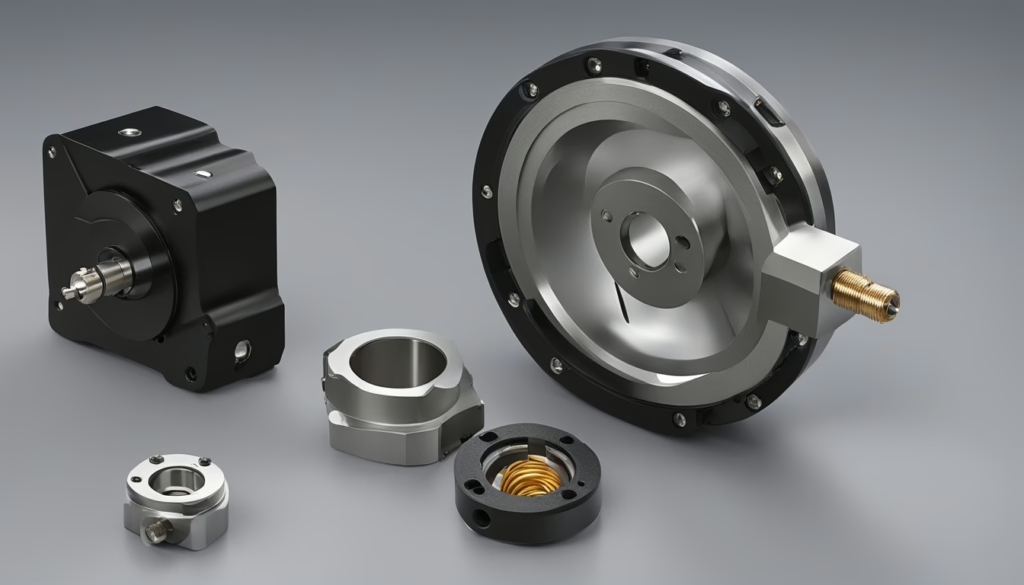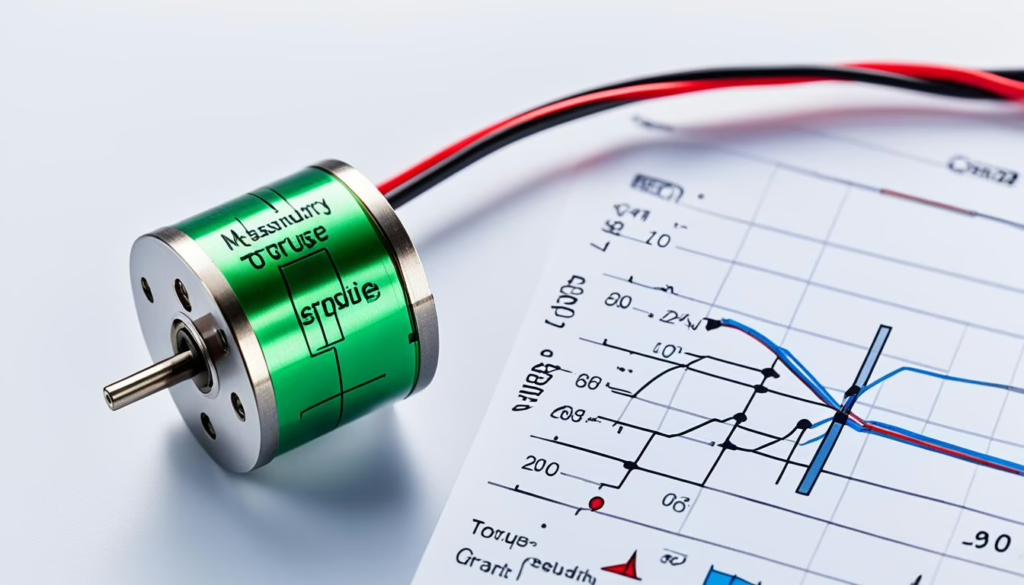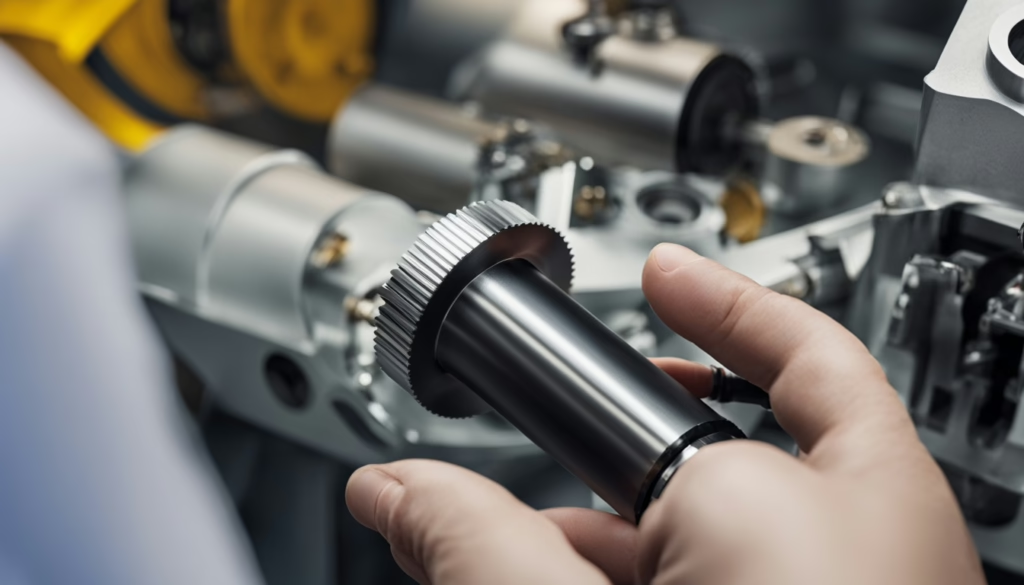Ever wondered how engineers make sure every bolt and machine works perfectly, no matter the situation? The answer is in the precise measurement power of static and dynamic torque sensors. These tools are key to the smooth running of everything from car engines to space tech.
Getting torque measurement right is vital. It’s what keeps machines and systems reliable when exact torque is needed. By learning about static and dynamic torque sensors, you’ll see how they’re crucial in today’s engineering world.

Key Takeaways
- Static and dynamic torque sensors are key for precise torque measurement.
- Knowing about torque sensor accuracy is important for machine reliability.
- These sensors are vital in fields like car making, space tech, and defense.
- Choosing between static and dynamic sensors depends on what you need.
- New tech in torque sensors is making measurements more precise and lasting longer.
Introduction to Torque Sensors
Torque sensors are key in engineering and machinery, crucial for measuring torque precisely. They turn torque, a rotational force, into an electrical signal. This signal can be measured and analyzed. Knowing how torque sensors work makes mechanical systems more efficient and reliable.
Definition and Importance
Torque sensors, or torque transducers, are crucial in many fields. They’re used in the automotive industry to check engine performance. They also help in industrial settings to make sure machines work right. These sensors give accurate readings, helping machines run better and last longer, and keeping everyone safe.
History and Development
The story of torque sensors started with simple mechanical tools like torsion bars and spring-loaded devices. As technology got better, so did torque sensors. They moved from mechanical to electronic, making them much more precise and reliable.
Now, modern torque sensors use strain gauge technology. This makes them much better at giving accurate readings.
For a deeper look at torque measurement devices and their new uses, check out this page.
How Static and Dynamic Torque Sensors Work
Static and dynamic torque sensors work in different ways. They use unique methods to measure twisting forces. It’s important to know these methods to pick the right sensor for your needs.
Basic Principles
Static torque sensors measure twisting force when there’s no rotation. They check how much strain is on a part that doesn’t spin. Dynamic sensors, however, measure torque while something is turning. They give feedback in real-time, which is key for controlling machines.
Static vs Dynamic Torque Measurement
Static and dynamic torque sensors serve different purposes. Static sensors work best when things don’t move. They give accurate readings without worrying about motion. Dynamic sensors are great for situations where parts keep turning. Both types use advanced tech for precise measurements.
| Feature | Static Torque Sensors | Dynamic Torque Sensors |
|---|---|---|
| Measurement Type | Static (Non-Rotational) | Dynamic (Rotational) |
| Applications | Static torque mechanics | Dynamic sensing technology |
| Operational Environment | Stationary Conditions | Rotating Machinery |
Types of Torque Measurement Devices
There are many torque measurement devices to choose from, each with its own special features. Rotary torque sensors and reaction torque sensors are two main types, each suited for different needs.
Rotary Torque Sensors
Rotary torque sensors are great for measuring torque that changes often. They’re perfect for things like engines or rotating parts. These sensors can measure torque very precisely and work well in many places.
They’re key for checking how well motors, gearboxes, and drive shafts work. Regular calibration is important to keep them accurate. This helps make sure the measurements are right.
Companies like those in the automotive and aerospace industries use these sensors a lot. They like how reliable and efficient they are, even when things are moving fast.
Reaction Torque Sensors
Reaction torque sensors are for measuring torque that doesn’t change much. They’re great for tests or labs where the torque is steady. These sensors measure the force between an object and its base.
They’re very stable and good for watching something over a long time. They’re also great for checking quality and for research where you need to measure tiny forces without the effects of rotation.
| Feature | Rotary Torque Sensors | Reaction Torque Sensors |
|---|---|---|
| Measurement Type | Dynamic | Static/Slowly Varying |
| Common Applications | Engines, Rotational Machinery | Testing Equipment, Laboratory Settings |
| Key Advantage | High-Resolution Measurement | Stability and Precision |
| Industry Utilization | Automotive, Aerospace | Research & Development, Quality Control |
Applications of Static and Dynamic Torque Sensors
Torque sensors are key in many high-precision fields. They boost efficiency, safety, and performance. We’ll look at how static and dynamic torque sensors are used in the automotive, industrial, and aerospace sectors.
Automotive Industry
In cars, automotive torque sensors check if engines, transmissions, and drive systems work right. They help make cars run better, use less fuel, and stay safe. These sensors are vital for making better engines and electric cars. They make sure each part works well under different conditions.
Industrial Applications
In factories, industrial torque sensing is common. It helps machines work right and keeps quality high. This means making more products and avoiding machine problems. Companies like those in materials science, robotics, and heavy machinery use torque sensors a lot. They need accurate torque readings to keep things running smoothly.
Aerospace and Defense
The aerospace and defense fields need top-notch accuracy and reliability. Aerospace torque measurement is key for making and fixing aircraft, spacecraft, and defense gear. Getting torque right is crucial for safety and performance. With advanced torque sensors, engineers can make aerospace parts better and stronger. This meets tough industry standards and rules.
For more info on using precise torque sensing in different areas, check out XJCSENSOR’s website. They have lots of details.
High Precision Torque Sensors: Key Features
High precision torque sensors are key for exact measurements and consistent performance. They bring many benefits to the field of torque measurement.
Accuracy and Reliability
High precision torque sensors are known for their unmatched accuracy. They use the latest technology for precise torque measurement. This is vital for keeping mechanical systems running smoothly.
Companies like Honeywell and HBM make devices that give accurate torque readings. This ensures they work at their best.
Durability and Environmental Resistance
These sensors are built to last and handle tough conditions. They can work in extreme temperatures, moisture, and dust. Brands like Futek and Interface, Inc., are known for their durable sensors.
Their sensors have strong casings that last a long time, even in tough environments.
Calibration and Maintenance
Keeping high precision torque sensors accurate requires regular calibration and maintenance. Companies like Fluke and Tektronix offer calibration services. This keeps sensors precise.
Regular checks and recalibration spot and fix any issues. This makes the sensors last longer.
| Feature | Description | Example Brands |
|---|---|---|
| Accuracy | Advanced technology for precise measurements | Honeywell, HBM |
| Durability | Withstands harsh industrial conditions | Futek, Interface, Inc. |
| Calibration | Regular procedures to maintain precision | Fluke, Tektronix |
Torque Sensor Technology Advancements
Torque sensor technology has seen big changes, thanks to new innovations and advancements. These changes make them work better and more precisely. We’ll look at some recent changes and what the future might hold for torque sensors.
Recent Innovations
In the last few years, torque sensors have gotten much more accurate and easier to use. New materials and designs have made them stronger and longer-lasting. For example, wireless torque sensors have made setup and upkeep easier by getting rid of wires.
Also, new algorithms have made measuring torque more precise, even in changing conditions.
The Transducer Techniques RST Series rotating torque sensors are a big step forward. They’re used in car testing, aerospace, and manufacturing. These sensors use the latest tech to give detailed data, making things more efficient and saving money. For more info, check out Transducer Techniques.
Future Trends
Looking to the future, we expect to see even better accuracy and more smart tech integration. Smart torque sensors that use IoT tech are coming, allowing for real-time data and predictive maintenance. This will make torque measurements more reliable and easy to connect with other smart systems.
Also, new materials science breakthroughs will lead to sensors that are more sensitive and can handle tough environments. This will open up more uses in fields like aerospace and defense, where sensors need to perform under extreme conditions. As torque measurement tech keeps getting better, we’ll see more new solutions for today’s needs.
Choosing the Right Torque Sensor for Your Application
Finding the right torque sensor is key to getting accurate and reliable results. Every application has its own needs, making the choice a blend of art and science. You must think about performance, the environment, and your budget. Knowing these factors helps make better decisions.
Factors to Consider
- Performance Requirements: Start by defining what your application needs from a torque sensor. Think about accuracy, sensitivity, and range. For precise measurements, consider high-resolution sensors like those from XJCSENSOR.
- Environmental Conditions: Think about where the torque sensor will be used. Things like temperature, humidity, and chemicals can affect how well it works. You’ll want sensors that can handle tough conditions.
- Budget Constraints: Money matters. Finding the right balance between cost, performance, and durability is key to making a good choice.
Common Mistakes to Avoid
When picking torque sensors, some mistakes can lead to bad data and poor performance. Here are some things to watch out for:
- Ignoring Application-Specific Requirements: Don’t use a generic sensor without thinking about your specific needs. Choose sensors made for your application for better accuracy and reliability.
- Neglecting Calibration: Calibration is crucial for accurate readings. Skipping it can cause errors. Make sure to calibrate your sensors regularly.
- Overlooking Sensor Compatibility: Make sure the sensor works with your system and tools. The wrong sensor can lead to data issues and slow you down.
Steering clear of torque sensor errors is key to good data. Thinking carefully about these points will improve your measurements’ performance and reliability.
Below is a table that compares important factors to consider when picking the right torque sensor for your needs:
| Factor | Importance | Recommendation |
|---|---|---|
| Accuracy | High | Opt for high-resolution sensors like those from XJCSENSOR |
| Environmental Resistance | Critical for harsh conditions | Choose robust and durable sensors |
| Budget | Moderate | Balance cost with performance requirements |
| Calibration Needs | Ongoing | Regularly calibrate sensors |
The Role of Torque Sensor Calibration Procedures
Ensuring torque sensor accuracy is key for reliable measurements. Calibration is vital, aligning the sensor with precision standards. This makes sure torque sensors give consistent, trustworthy data in many fields, like cars and factories.
Calibration keeps precision measurement standards up. It compares sensor readings with known values and adjusts them. This careful process keeps torque sensors very accurate, reducing errors. The calibration importance is huge, making sure the device meets global standards.
XJCSENSOR, a leader in precise sensors, highlights calibration’s role. Their sensors are made for precision and reliability, fitting into many uses like press machines and automation. They offer custom solutions, keeping torque sensor accuracy high.
Calibration affects many parts of torque sensors, including:
- Enhanced Accuracy: Regular calibration keeps the sensor precise, ensuring accurate measurements.
- Increased Reliability: It makes sure sensors work well and give dependable data over time.
- Compliance with Standards: Following global precision standards builds trust in sensor data across industries.
For torque sensors to work well, strong calibration is key. Regularly checking sensor readings against standards builds trust in the data. For detailed support and equipment, check out XJCSENSOR.
Understanding Static and Dynamic Torque Sensor
Learning about torque sensors is key to boosting precision and efficiency in many areas. It’s important to know the difference between static and dynamic torque sensors. They serve different needs.
Static torque sensors measure non-moving force. They work best in places where there’s little motion. This makes them perfect for tasks needing exact measurements.
Dynamic torque sensors, however, track rotational force in real-time. They’re great for tasks that involve moving parts. This includes checking how electric screwdrivers or digital torque wrenches work.
For a better grasp of torque sensors, look into resources from experts. XJCSENSOR is a top name in precision sensors. They help make tools more accurate and efficient, especially in the automotive and aerospace sectors.
When picking between static and dynamic torque sensors, think about your application. Static torque sensors are best for stable settings that need precise, little movement. Dynamic sensors are better for moving parts because they handle rotational forces well.
Knowing how torque sensors work can greatly improve tool performance and precision. Companies like XJCSENSOR provide reliable solutions. Their technology boosts productivity and accuracy across industries.
Conclusion
Looking back at torque technology, we see how important these devices are across many industries. They help with both static and dynamic torque measurements. This shows how crucial precision is in their work.
These devices are used in the automotive, industrial, aerospace, and defense sectors. They are key in these fields because of their accuracy and reliability. They also need to be well-maintained to work right.
New advancements in torque sensor technology are making them even better. These changes bring more precision and reliability. This makes them more valuable for different uses.
Choosing the right torque sensor is very important. It depends on what you need to measure and avoiding mistakes. Looking at torque technology, we see that torque sensors are vital for precision. They help make many processes more efficient and successful.









